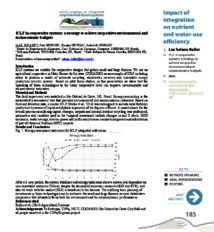ICLF in cooperative systems: a strategy to achieve net positive environmental and socioeconomic budgets.
ICLF in cooperative systems: a strategy to achieve net positive environmental and socioeconomic budgets.
Author(s): BULLER, L. S.; BERGIER, I.; ORTEGA, E.; MORAES, A. de
Summary: ICLF systems are suitable for cooperative designs that gather small and large farmers. We use an agricultural cooperative in Mato Grosso do Sul state as an example of ICLF INCLUDING SWINE to produce a model of nutrients recycling, stormwater recovery and renewable energy production (eletric power). Based on pilot farms studies, in this presentation we show that the upscaling of these technologies to the entire cooperative level can improve environmental and socioeconomic indicators.
Publication year: 2015
Types of publication: Abstract in annals or event proceedings
Unit: Embrapa Pantanal
Observation
Some of Embrapa's publications are published as ePub files. To read them, use or download one of the following free software options to your computer or mobile device. Android: Google Play Books; IOS: iBooks; Windows and Linux: Calibre.
Access other publications
Access the Agricultural Research Database (BDPA) to consult Embrapa's full library collection and records.
Visit Embrapa Bookstore to purchase books and other publications sold by Embrapa.

